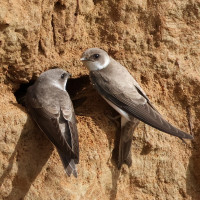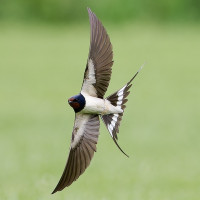Opis
The reserve is a Site of Special Scientific Interest and has become important for wildlife due to the wide range of habitats including wet woodland, grassland, open water and river side, which are home to many different types of birds. In 2003 a redundant sewage treatment works on the site was replaced with a new reedbed habitat and a boardwalk which enabled public access with minimal disturbance to wildlife. Bird species found here are bąk, zimorodek, kszyk, puszczyk zwyczajny, pierwiosnek, kukułka, brzegówka, dymówka, czapla siwa, perkozek, potrzos, woodpeckers and woodland bird species.
Szczegóły
Dostęp
The reserve is located west of Bishop Auckland, close to the A68. From the A68 follow the brown signs through the village of Witton-le-Wear, turning right at the Victoria public house. Once over the level crossing, the centre is half a mile along the road on the right. From A689 the reserve is three-quarters of a mile west of High Grange. Entrance to the reserve is free with car parking, but Durham Wildlife Trust suggest a donation of £2.50 for parking for non-Durham Wildlife Trust members. Good access with smooth, wide pathways between the many hides suitable for all mobilities.
Teren i siedlisko
Las , Tereny podmokłe , Jezioro , Trzcinowiska , Rzeka , DolinaWarunki
Płaski , Bagienny , Możliwy wysoki poziom wodyTrasa dookoła
TakCzy luneta będzie przydatna ?
NieUdany sezon obserwacyjny
Przez cały rokNajlepszy czas na wizytę
Wiosna , Jesień , Lato , ZimaTrasa
Szeroka ścieżka , Wąski szlak , Droga utwardzonaPoziom trudności szlaku pieszego
ŁatwyDostępne
Pieszo , Rower , Samochód , Wózek inwalidzkiCzatownia/platforma obserwacyjna
TakDodatkowe informacje
The site’s flat terrain and large accessible bird hides make it a place to visit for everyone. There are three lakes and interconnecting streams, a number of mature ponds with extensive reedbeds and a wet pasture. The lakes and open water support good numbers of wildfowl.The woodlands and grasslands on site add to the diversity of bird life.There are several bird hides across the reserve that are open to all visitors. Low Barns Nature Reserve has a flat terrain and a network of surfaced paths linking the bird hides allowing easy access for all visitors. The visitor centre on the site offers a coffee shop and web cam viewing of the bird feeders.





